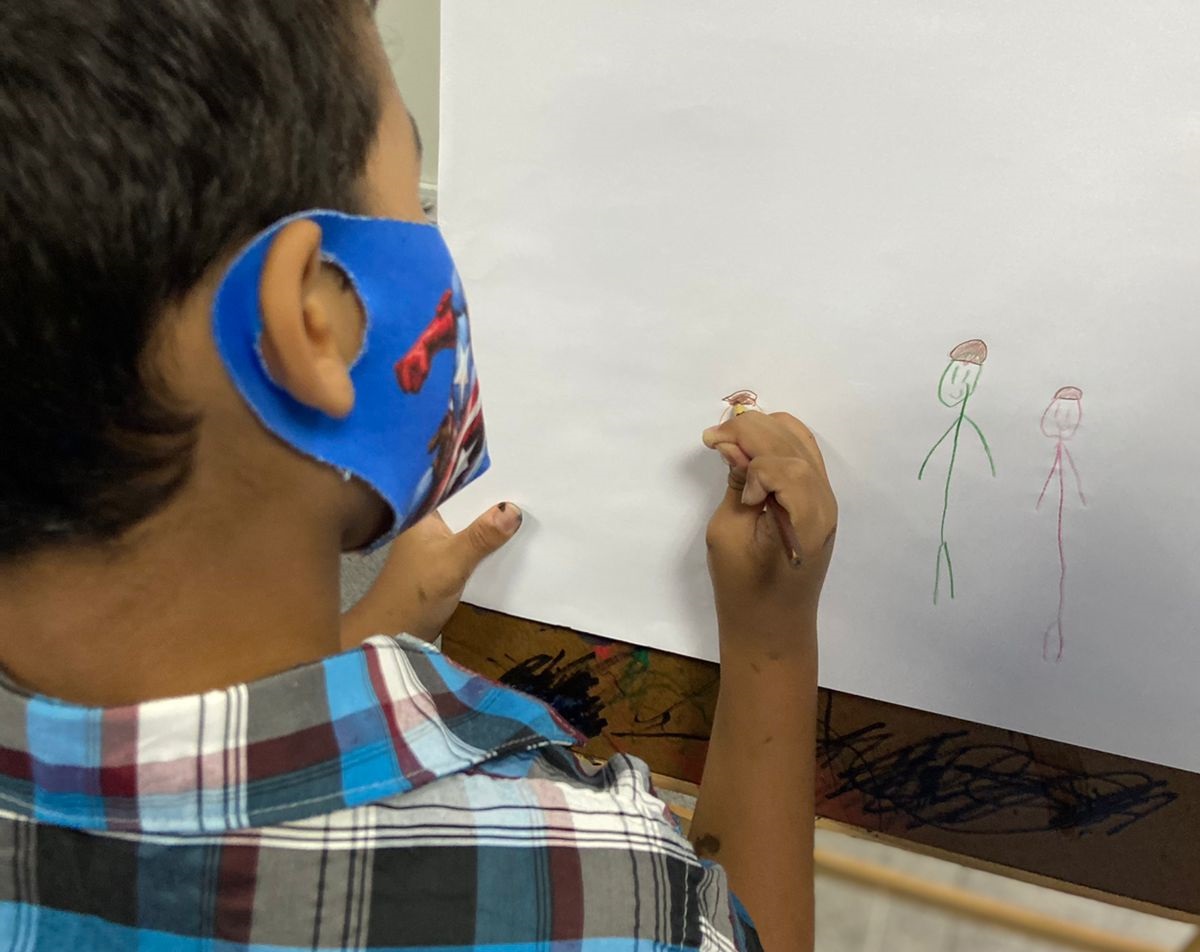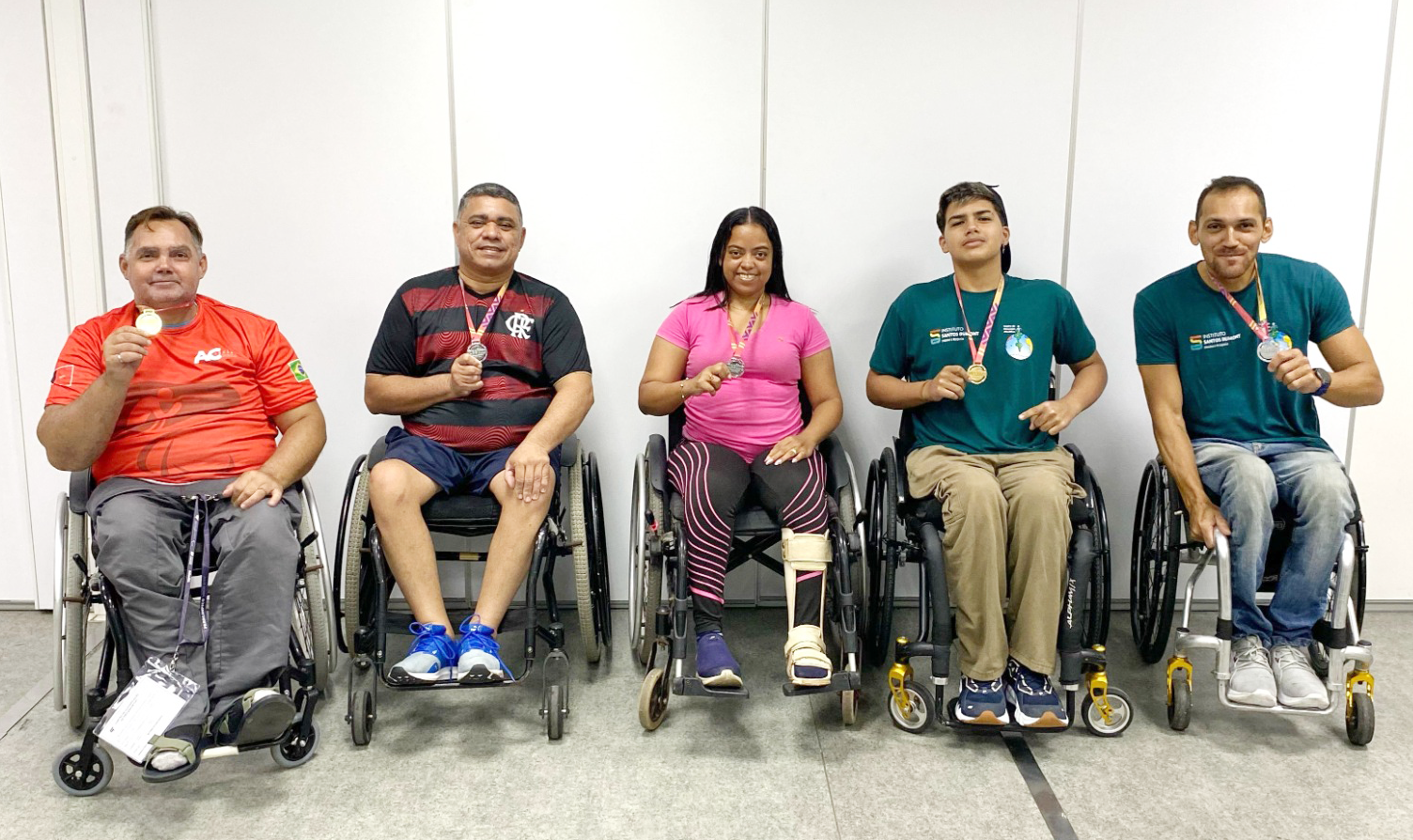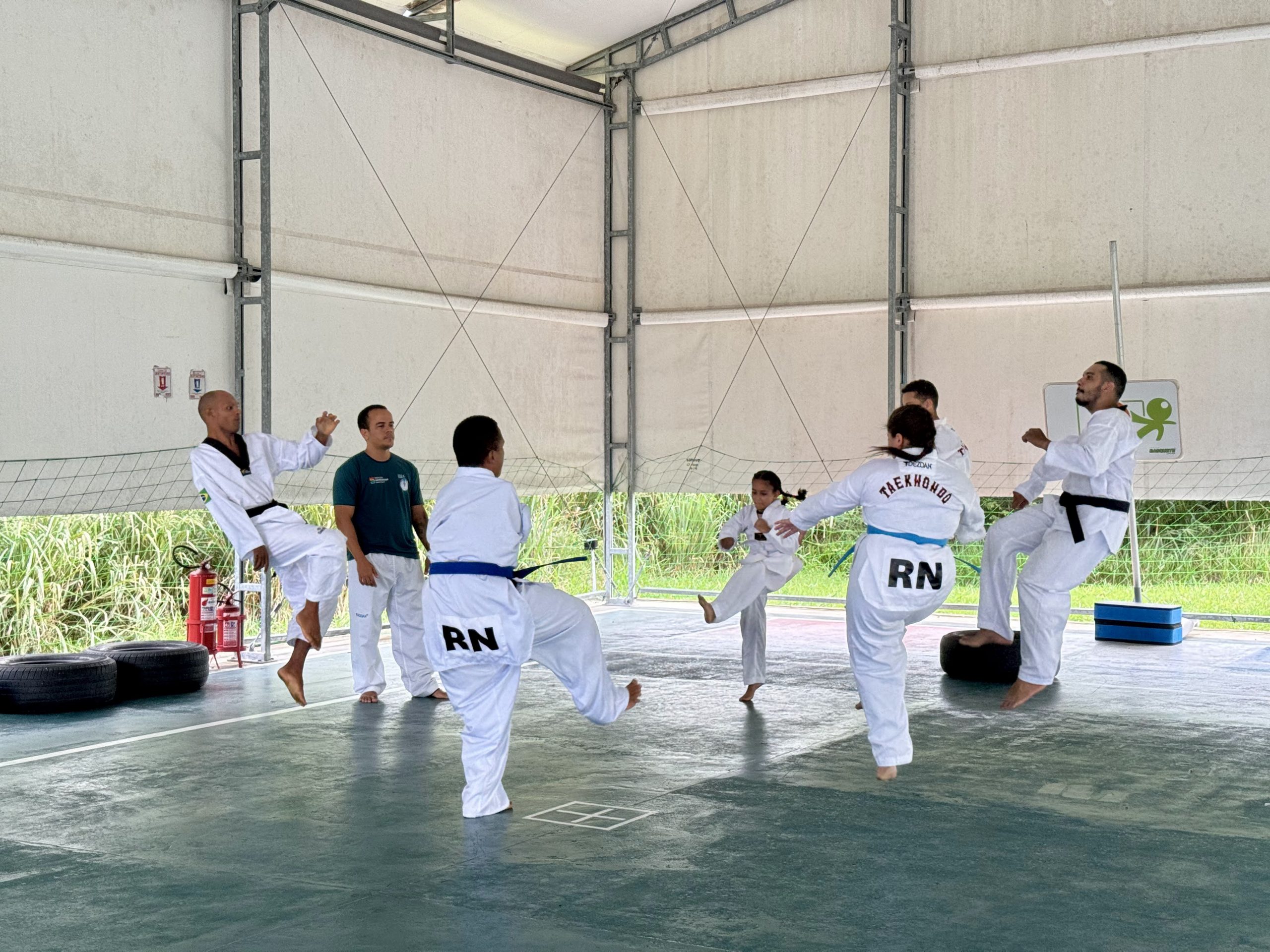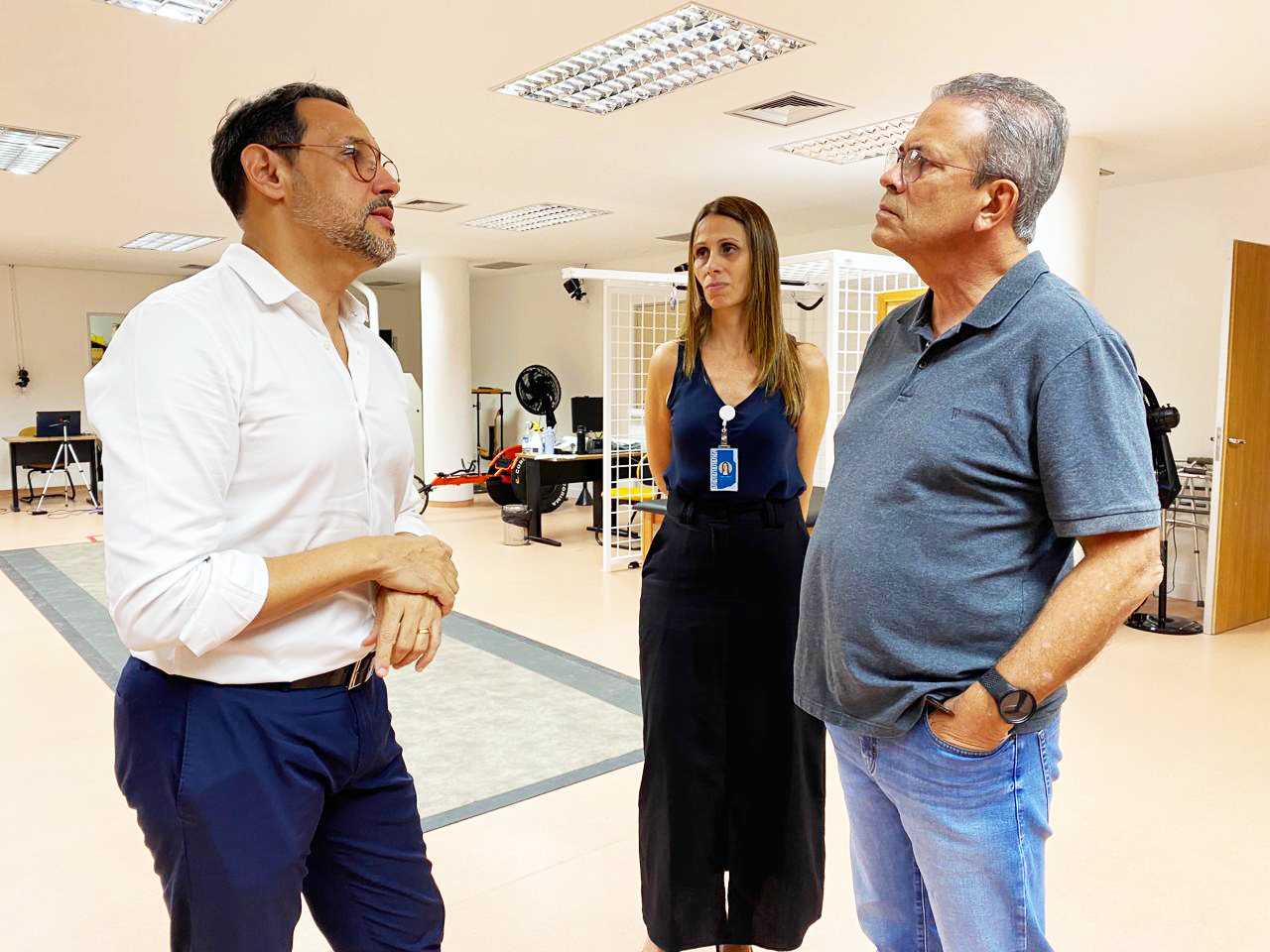The Santos Dumont Institute has the differential of developing translational research, the ones that start in the labs with basic science and finish on the practical application of the learned knowledge. In the Master’s in Neuroengineering that takes place at the Edmond and Lily Safra International Institute of Neurosciences, there are two main areas of concentration: Brain-Machine Interface (BMI) and Neuromodulation.
Brain-Machine Interface (BMI)
Establishes direct communication between the nervous system and robotic artifacts, whereas they are electronic or computational, through the use of neurophysiological signals and micro brain stimulation. Examples of a signal that is captured from the nervous system are electroencephalograms, electrocorticography, unitary activity of extracellular recordings, local field potential of extracellular recordings, functional magnetic resonance and magnetoencephalography. Examples of artifacts controlled by these signals are the robotic prostheses, vehicles and computers.
The development of BMI’s has a great therapeutic and technological potential for many neurological diseases that dramatically affect motor function, such as brain paralysis, Parkinson’s disease and strokes. The deepening of research regarding BMI’s can lead to the birth of a new generation of neuroprosthetic devices capable of restoring a variety of neurological functions in patients severely limited by their disabilities.
BMI allows to overcome the established means of communication known up to this point, and also the development of new interfaces such as Brain-Machine-Brain, as long as studies about the interaction dynamic between brains during social interactions. At the same time, it is necessary to develop technologies of biocompatible materials, such as electrodes, that are more efficient in order to evaluate the chronic use of BMI. Together, the research of individual components for the implementation of a BMI requires an advanced technological development, integrated to the comprehension of neurobiological mechanisms involved in the system. On this approach, the researches on BMI allow the development of extremely advanced assistive technologies.
Neuromodulation
Consists on the use of chemical, biological or physical agents in order to establish, reestablish, modulate, inhibit or increase functions of the nervous system. Neuromodulation can be non-invasive, with the transcranial magnetic or electric current stimulation, or invasive, through the implant of devices on the nervous system that liberates a chemical or physical agent. Examples of chemical agents are ionic channels modulations, and an example of a physical agent is the electric stimulation.
Neuromodulation with electric stimulation is being currently used in treatments for Parkinson’s disease, essential tremor, chronic pain, epilepsy, hearing impairment (deafness), depression, dystonia, Tourette’s syndrome, and obsessive-compulsive disorder. Other than those diseases and disorders, there are many others that are under investigation. Obesity and eating disorders, visual impairments (blindness) and angina pectoris are examples of disorders that have current studies on the clinical efficacy of many therapies of neuromodulation for patients.
Another research path in this area regards the technological development of new equipment and products, as well as the improvement of the existing ones, such as the dimension, format and biocompatible materials of electrodes. The studies for technological development aim to test concepts that signifies an evolution of the state of neuromodulators, building the ones that will be used in the next decades.
The investigation of physical parameters, such as the intensity of the electric current, frequency and polarity are still unknown. The neurobiological aspects related to the physical parameters need further investigation in order to better understand the physical-chemical phonomenons induced in the nervous system, allowing to explore essential mechanisms for assistive technologies accessible to the population.
The develpment of neuromodulators recquire investigation and development of specific devices that can access the Central and Peripheral Nervous Systems. These advanced researches in neuromodulation can overcome the current knowledge and go beyond expectations regarding devices of intervention and alteration of disturbances, for new applications and for also preventing conditions through smart systems.









